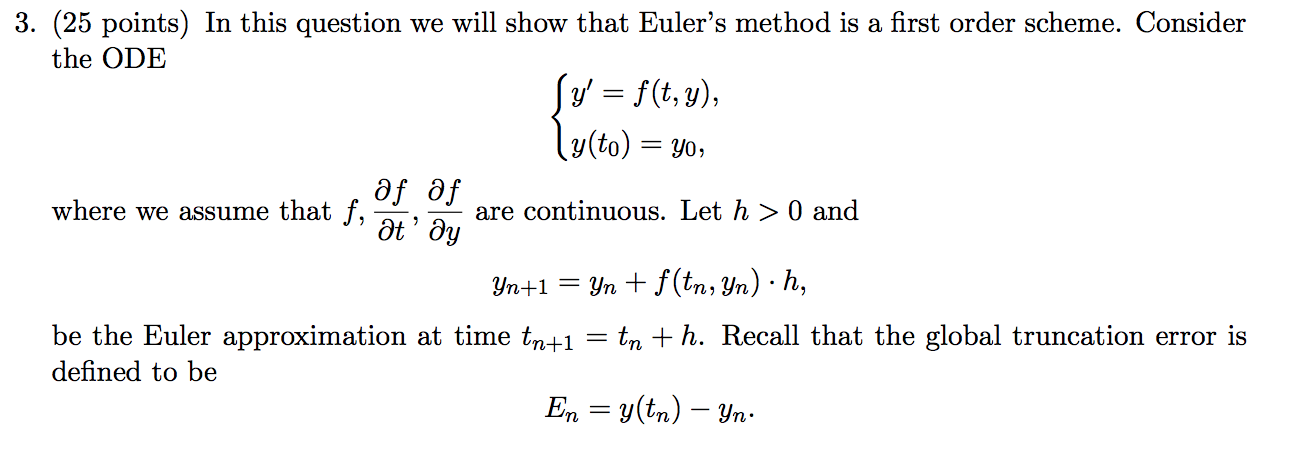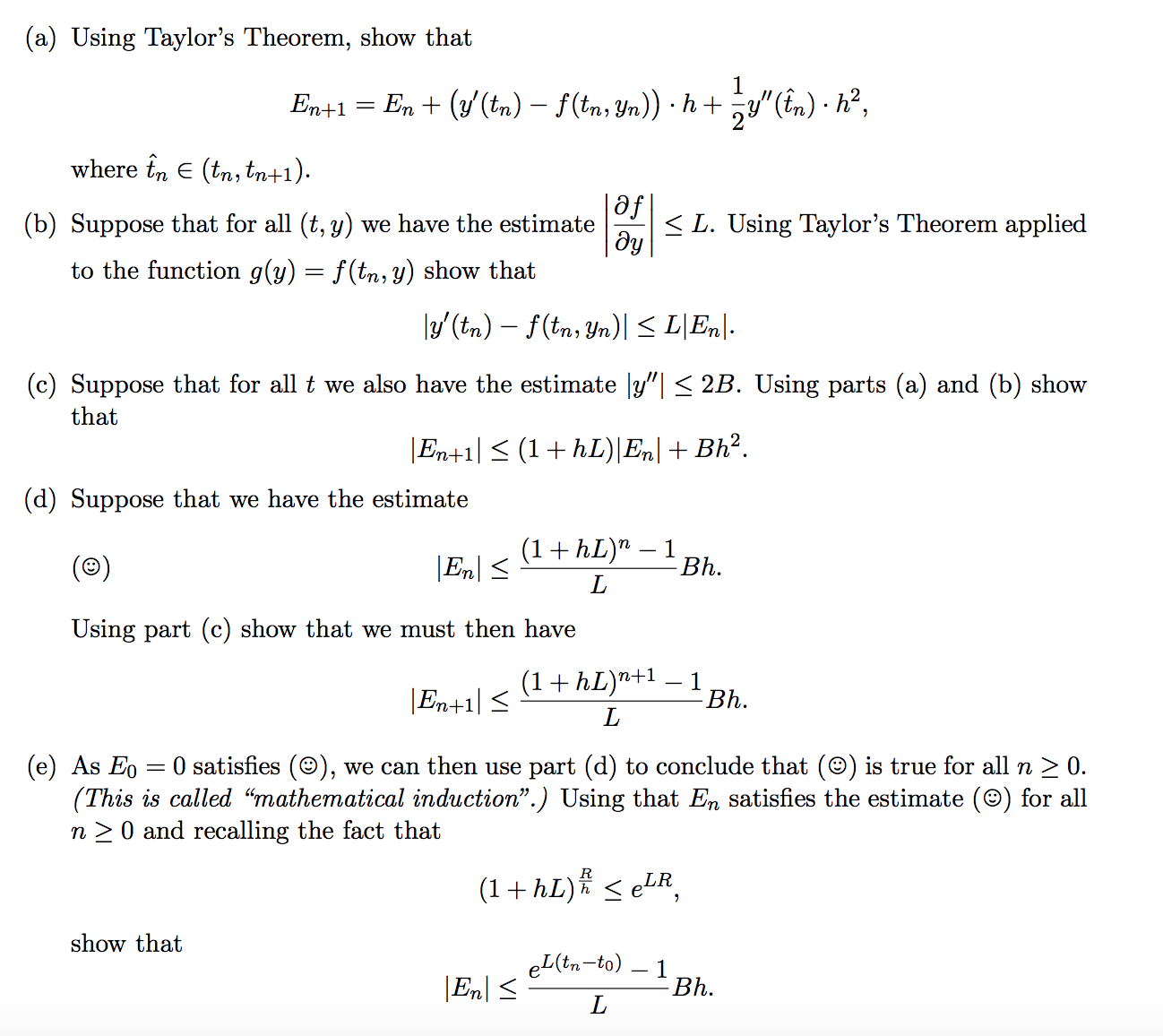Answered step by step
Verified Expert Solution
Question
1 Approved Answer
In this question we will show that Euler's method is a first order scheme. Consider the ODE y' = f(t,y) , y(t0) = y0 where
In this question we will show that Euler's method is a first order scheme. Consider the ODE y' = f(t,y) , y(t0) = y0 where we assume that f, ...
Send me email if you know how to solve all my ODE question that I posted.


Step by Step Solution
There are 3 Steps involved in it
Step: 1

Get Instant Access to Expert-Tailored Solutions
See step-by-step solutions with expert insights and AI powered tools for academic success
Step: 2

Step: 3

Ace Your Homework with AI
Get the answers you need in no time with our AI-driven, step-by-step assistance
Get Started


